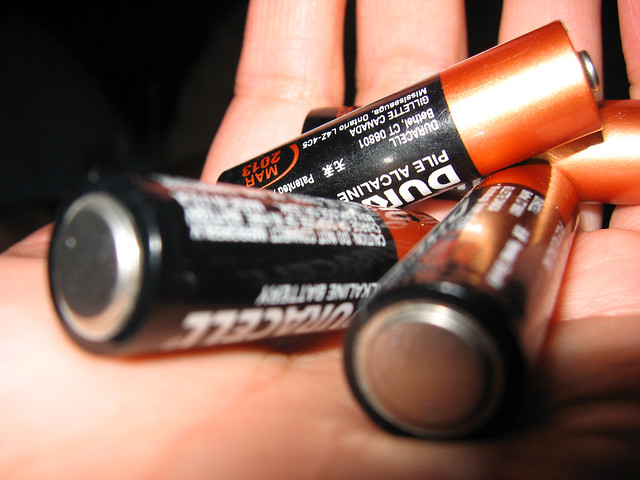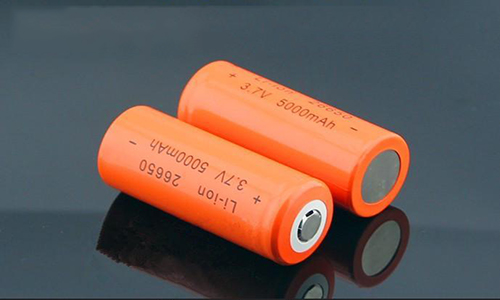18650 Battery Measurements Decipherin
Dec 13, 2019 Pageview:2292
Why do you need to know how your batteries work? The lithium ion battery world is riddled with percentage that's why. That's why we started Battery Bro-delivering high-quality, and bulk li-ion batteries without the BS.
So we thought we should send you a brief write-up of all the words you're going to see in battery tests and spec sheets that is important to know about 18650 battery.
The essence of this:
Any electrical circuit's most critical parameters are voltage, resistance, current and power. To understand these, there is a very simple analogy which is discussed below. Such batteries provide a balance between capacity, output, rechargeability, and dimensions that have made it one of today's LED flashlights ' most common power sources.
How Many mAh Is 18650 Battery?
18650 battery is rated at 3,200 mAh, which means that 3,200 milliamps (3.2 amps) can be discharged in an hour and then it's done. This also means that if you want to do half of that (1.6 amps) in an hour, you'd get two hours of power until the battery is drained.
Batteries work under the Peukert Law statute. Simply put, the more current your battery draws, the less mAh you can get out of it.
That's why you should look at the current discharge in the Notes section at all times. By discharging the battery at 0.65A discharge current, they obtained this figure. This means they discharged the battery at 0.65A for 3.2/0.65= 4.92 hours in order to get the figure of 3.2 amp hours. In fact, depending on how high the discharge current is, batteries can have different mAh ratings. The capabilities of mAh are never accurate.
Don't be too concerned about the disparity between marginal and graded figures. The actual discharge and the temperature used to get those figures is much more important.
Continuous discharge current Max is an important figure for anyone, particularly vapers, who pushes their devices to the max. This is the maximum discharge current in amps, as the wording implies, to a point. Even if it states the peak current can be maintained indefinitely, in fact, with a slightly lower discharge current, it is better to stay on the safe side.
Next, we have the battery's internal resistance. This will always be presented in the abstract, or in ohms. The internal resistance of a battery increases over its lifetime, so that it will have very high internal resistance by the time a battery is dead. In general, a battery with lower internal resistance can withstand higher Amp (current) loads.
What Are The Sizes Of 18650 Battery?
Firstly, it is necessary to know what does 18650 digits mean?
18–The first two digits "18" corresponds to the diameter in millimeters of the li-ion battery. The battery width is 18 mm (millimeters) in this case.
65 –The length in millimeters is the third and fourth digits. That's going to be 65 mm.
0 – All right? That's how the battery manufacturers calculate the battle for those who want to know why zero is there. Length: 650 is 65 mm divided by 10. We're going to forget about zero for now because we're simple people.
The 18650 (18 mm by 65 mm) battery is a lithium-ion battery volume type. If you've ever kept one in your pocket, it's probably the same shape you've seen, but it's a bit bigger than an AA battery. AA batteries are sometimes referred to as 14500 batteries by contrast because they have a diameter of 14 mm and a height of 50 mm. All lithium-ion cylindrical batteries follow the same nomenclature, their name being determined by their length (diameter, height followed).
What Voltage Should You Charge Your 18650 Battery?
Voltage is another important factor of 18650 batteries. This is a significant number. If you discharge, you do not want your system to surpass the voltage. Some systems will be printed prominently on the label or in the instruction manual with their voltage ratings. Batteries are usually charged at a higher voltage than they are discharged. To make sure you don't exceed that figure, check your battery charger.
Typically, 18650 cells are rated at 3.6, 3.7 and 3.65 volts at times. All of these scores are essentially the same. During a full discharge it is the typical voltage. For most 18650s, the maximum voltage range is between 2.5 volts and 4.2 volts. Most people are avoiding going under 3 volts. Going above or below this range can lead to heat generation, smoke, flame, or explosion while charging or discharging.
Note, however, that when you discharge the plug, the Volts fall. This complicates measurements of the amp hour. Watt hours are more reliable because a calculation of watts is more precise than amps. This is why. Suppose the 54 Volts battery is fully charged. You're driving and drawing 6 watts. That's about 324 watts. But what's going on at the battery bottom? When you draw the same 6 amps and the battery is at 42 Volts, that is 252 watts. That's far less watts. And you draw more and more amps to get the watts you need as the battery is depleting. You need about eight amps to get 324 watts. If a battery has 16 amp hours of power and you have drawn 8 amp hours, the battery will be more than half drained as each amp is now a lower voltage amp. If you have a battery of 500 amp and you know that you've discharged 250 watts, it's probably about half discharged.
It is somewhat more difficult and more important to charge lithium batteries than lead acid batteries. You charge a group of cells the same way you charge a single cell, multiplying cells in series for the cell count, the 'S' number. You would want to know the characteristics of the cell if you just wanted to charge one cell. Many 18650 lithium cells load up to a maximum of 4.2 Volts, and the load current is about 0.5 times the size. Using this law, a 3000 mAh battery would be charged up to a maximum of 1500 mA. Cells have data sheets detailing specific loading numbers.
- Prev Article: 18650 Battery Enclosure Introduction
- Next Article: Lithium Vs NiMH AA Batteries, Which Is Better
Leave Message
Hottest Categories
-
Hottest Industry News
-
Latest Industry News












